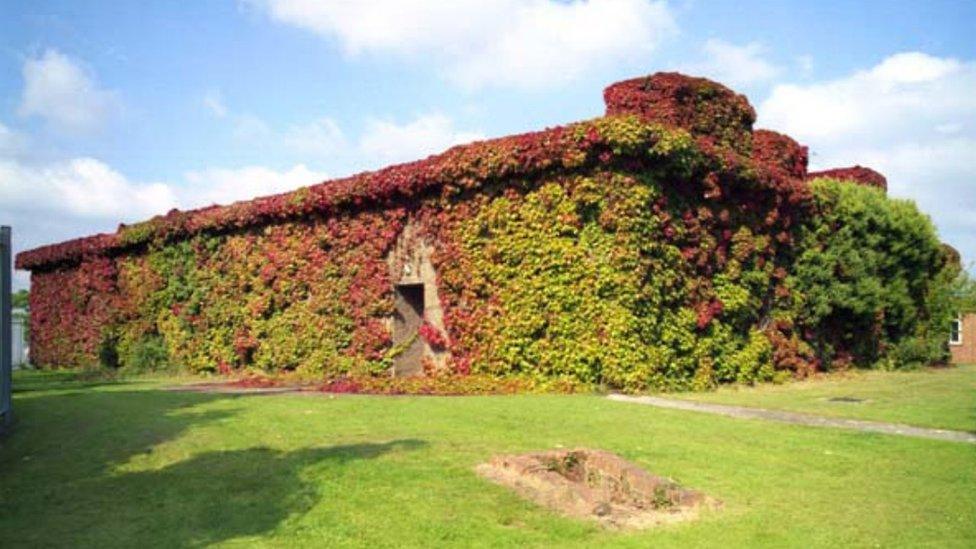Legbourne Cold War bunker goes under the hammer
- Published
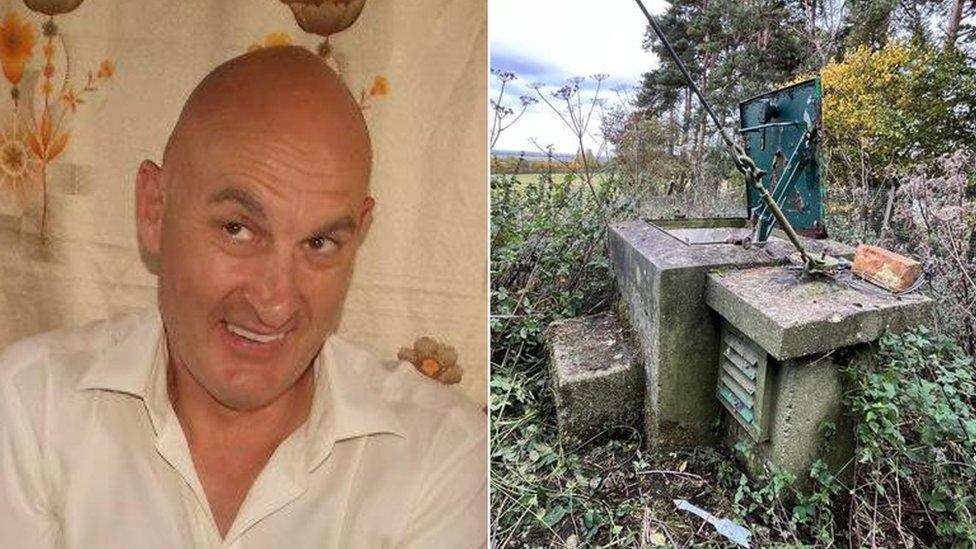
Mark Colledge is putting his Cold War bunker under the hammer
A Cold War bunker bought by an Army veteran during a "midlife crisis" is back on the market for a guide price of £25,000.
Mark Colledge, 63, paid £12,500 for the underground vault in Legbourne, Lincolnshire, in 2003.
With space for three people, the relic was built in 1959 in response to the threat of a Soviet nuclear attack.
It is due to go under the hammer on 24 November with SDL Property Auctions.
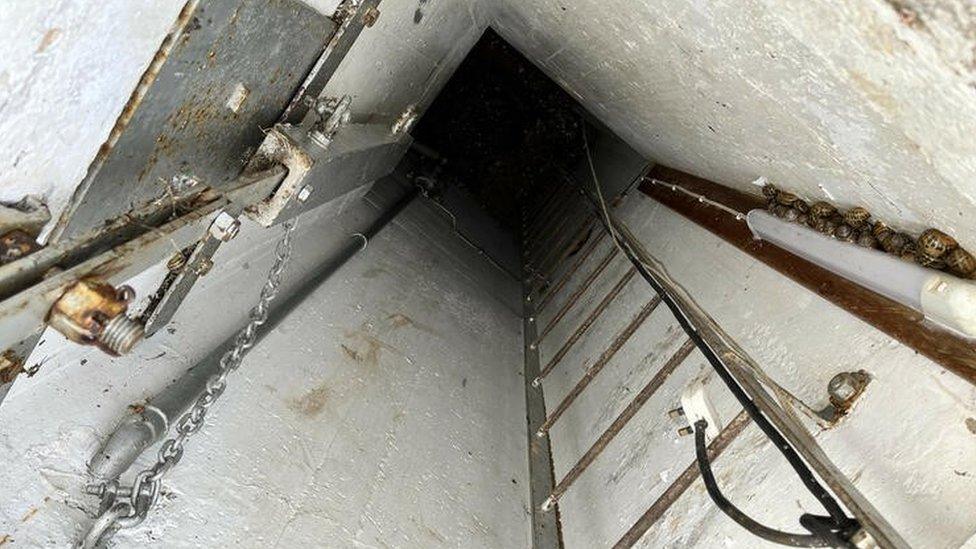
The vault is accessed via a 14ft (4.3m) shaft
Mr Colledge, from Saltburn-by-the-Sea, Teesside, said: "I think I was having a bit of a midlife crisis when I bought it. I suppose it was my man cave. Men will always buy things they don't really need.
"I'd go down into the bunker, sit and have a cider and think to myself, yeah this is cool. But it's a bit of a drive away from where I live and it's time to sell. Besides, my house has a cellar and I have everything I need there."
According to research from SDL Property Auctions, the bunker was designed to be occupied by the Royal Observer Corps (ROC) whose job it was to report on nuclear blasts and fallout following an attack.
Teams were equipped with a landline, radios and enough food and water to sustain them for 14 days.
Jim Demitriou, national valuer at SDL Property Auctions, said: "It's an extremely interesting lot, and something I haven't sold before.
"This is a real opportunity to buy some post-war British history."
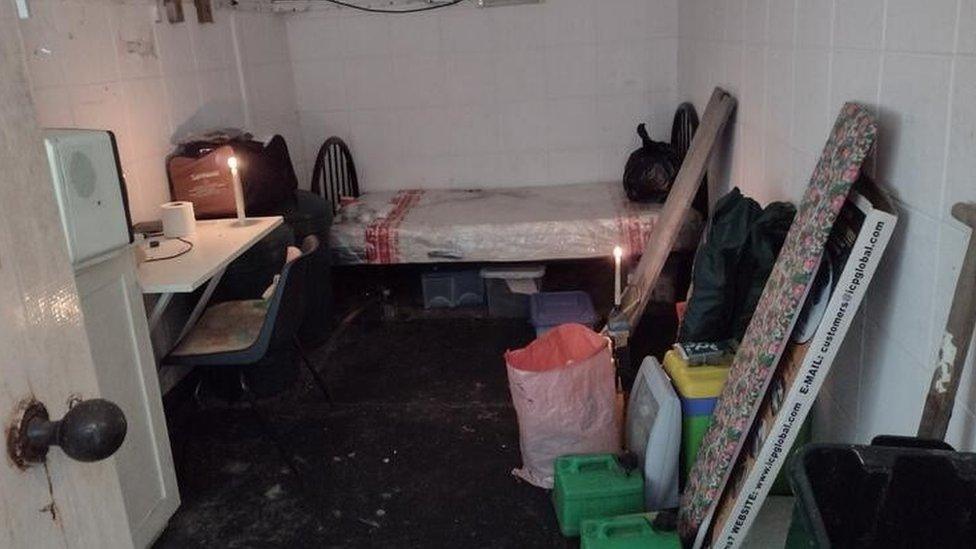
The bunker was designed to house three members of the Royal Observer Corps
Mr Demitriou said the bunker was "bone dry" inside and in "original condition".
Most ROC bunkers were decommissioned and sold off in 1993.
Since they were built as communication posts, they are positioned in favourable locations and many were bought by telecom companies, according to the auctioneer. Today, they are used as sites for mobile phone masts.

Follow BBC East Yorkshire and Lincolnshire on Facebook, external, Twitter, external, and Instagram, external. Send your story ideas to yorkslincs.news@bbc.co.uk, external.
- Published22 January 2021
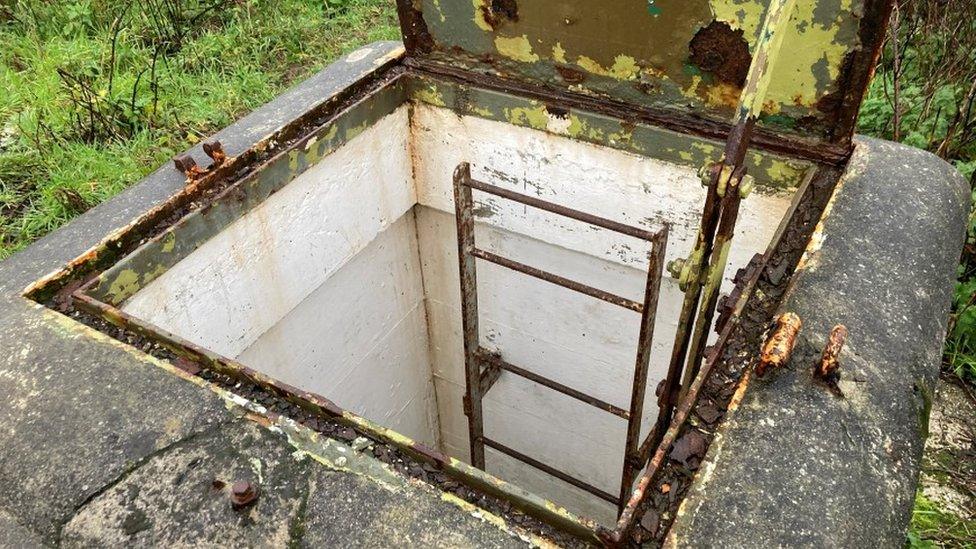
- Published18 March 2022
